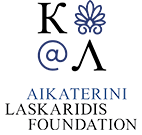Athens (1524 Subjects)
Reliefs from the west frieze of the Parthenon: Cavalry.
Reliefs from the west frieze of the Parthenon: Cavalry.
Reliefs from the west frieze of the Parthenon: Cavalry.
Reliefs from the west frieze of the Parthenon: Cavalry.
Reliefs from the west frieze of the Parthenon: Cavalry.
Reliefs from the west frieze of the Parthenon: Cavalry.
Metopes from the south side of the Parthenon: Centauromachy.
Metopes from the south side of the Parthenon: Centauromachy.
Metopes from the south side of the Parthenon: Centauromachy.
Metopes from the south side of the Parthenon: Centauromachy.
Metopes from the south side of the Parthenon: Centauromachy.
Metopes from the south side of the Parthenon: Centauromachy.
The Parthenon: Fig. 1: Plan of the angle of the Temple, with the Lion's head. Fig. 2: Section of ditto. Fig.3: Capital of the antae. Fig. 4: Capital of the internal columns.
Erechtheion: Fig. 1: Capital of the antae, with the continued mouldings and ornaments of the front wall, and a section of the Lacunariae. Fig. 2: Elevation of the external side of the antae, shewing some difference in the ornaments. Fig. 3, 4, 5, 6: Different ornaments under the flowers. Fig. 7: Section of the ornament at a, fig. 3. Fig. 8: Ditto at b. Fig. 9: Plan of the ceiling of the portico.
Propylaea of the Acropolis of Athens: Fig. 1: Mouldings of the architrave internally. Fig. 2: Capital of the antae. Pinacotheca: Fig. 3: Capital of the pilaster.
Odeon of Herodes Atticus, Athens: Elevation of the front of the scene.
Odeon of Herodes Atticus, Athens: Elevation of the back of the scene.
Odeon of Herodes Atticus, Athens: Section of the theatre through the scene.
Fig. 1: Fragments of a cornice of the Ionic order found on the hill above the seats of the Theatre of Bacchus. Fig. 2: The interior face of an architrave which is built up in a modern wall under an arch of the bridge over the Ilissus. Fig. 3: The capital of a pilaster in the wall of the bastion fronting the Propylea. Fig. 4: Attic base on the convent at Colouri. Fig. 5, 6, 7: Plan, elevation and section of an Ionic capital, probably found in the church of St. George, on Mount Anchesmus.
ig. 1, 2, 3: Quarter plan, elevation, and part of a section of a Doric capital found in a convent at Daphne. Fig. 4: Doric capital in the church of Stauromenos Petros. Fig. 5: Fragments in the metope of Mendeli. Fig. 6: Doric capital found in a ruined church, on the left hand of the road from the town of Athens, to the Turkish burial ground, facing the gate of the Acropolis. Fig. 7. Fillets of the above capital.
Frontispiece. Allegory of author's voyage.
Panoramic view of Athens, looking towards Piraeus and Salamis, from Pnyx hill.
Relief from the Church of Panagia Krystaliotissa, Athens.
Plan of the Antiquities of Athens as surveyed by J. Stuart.
Attica from an actual survey by Mr.Stuart.
Ornamental feature from the temple of Hephaestus painted in dark ochre. In the middle, Theseus riding the Marathon bull (reconstruction based on destroyed relief).
Cameo depicting Theseus.
View of the temple of Hephaestus in Athens. In the foreground, Arvanite peasants threshing corn under the supervision of a Muslim servant who is escorting his master's son. On the left, Arvanites in provisional hut (kalyvi).
Plan of the Temple of Hephaestus (Theseion), Athens.
Temple of Hephaestus (Theseion), Athens: The elevation of the eastern Front.































